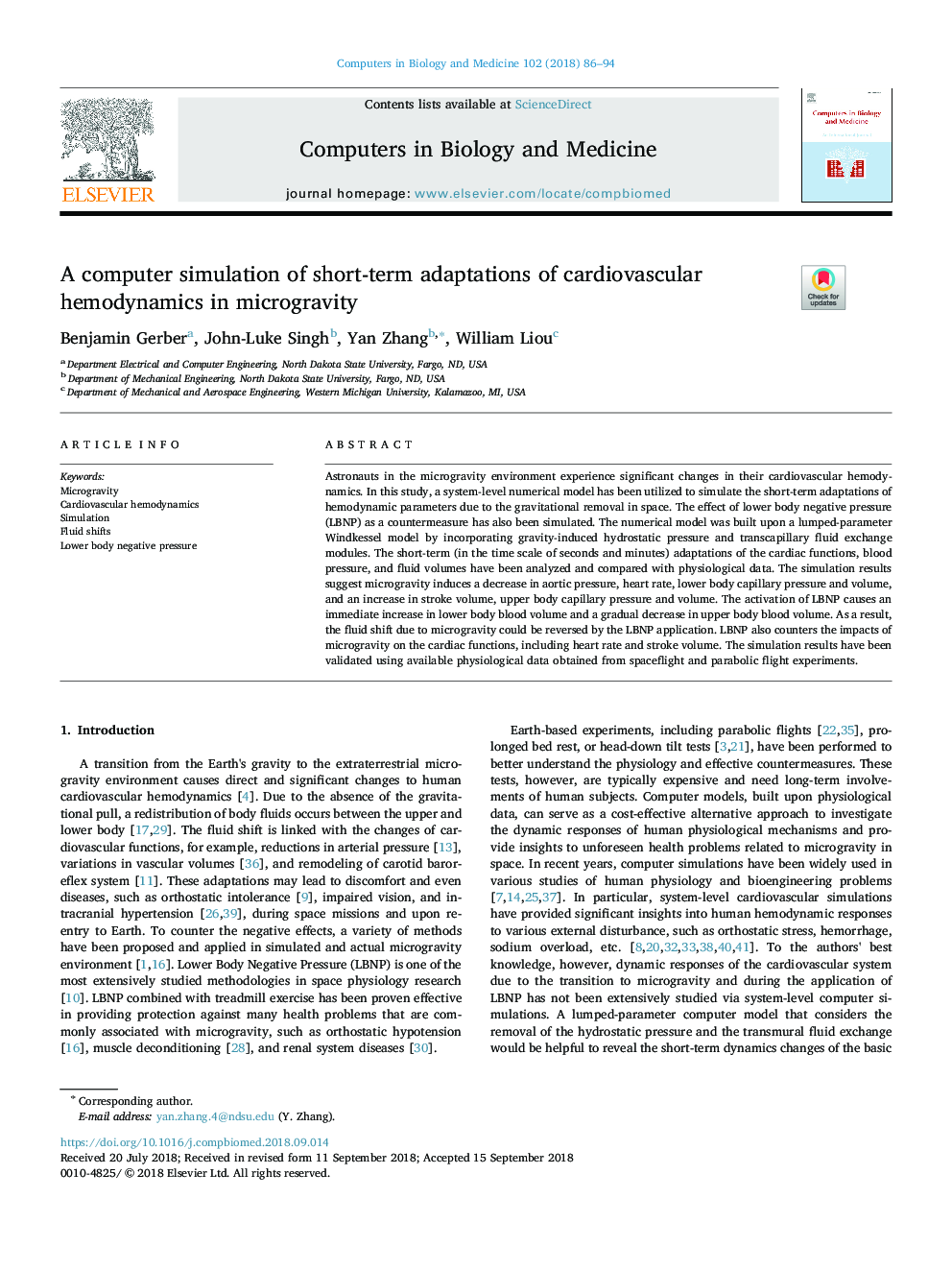| Article ID | Journal | Published Year | Pages | File Type |
|---|---|---|---|---|
| 11028054 | Computers in Biology and Medicine | 2018 | 9 Pages |
Abstract
Astronauts in the microgravity environment experience significant changes in their cardiovascular hemodynamics. In this study, a system-level numerical model has been utilized to simulate the short-term adaptations of hemodynamic parameters due to the gravitational removal in space. The effect of lower body negative pressure (LBNP) as a countermeasure has also been simulated. The numerical model was built upon a lumped-parameter Windkessel model by incorporating gravity-induced hydrostatic pressure and transcapillary fluid exchange modules. The short-term (in the time scale of seconds and minutes) adaptations of the cardiac functions, blood pressure, and fluid volumes have been analyzed and compared with physiological data. The simulation results suggest microgravity induces a decrease in aortic pressure, heart rate, lower body capillary pressure and volume, and an increase in stroke volume, upper body capillary pressure and volume. The activation of LBNP causes an immediate increase in lower body blood volume and a gradual decrease in upper body blood volume. As a result, the fluid shift due to microgravity could be reversed by the LBNP application. LBNP also counters the impacts of microgravity on the cardiac functions, including heart rate and stroke volume. The simulation results have been validated using available physiological data obtained from spaceflight and parabolic flight experiments.
Related Topics
Physical Sciences and Engineering
Computer Science
Computer Science Applications
Authors
Benjamin Gerber, John-Luke Singh, Yan Zhang, William Liou,
